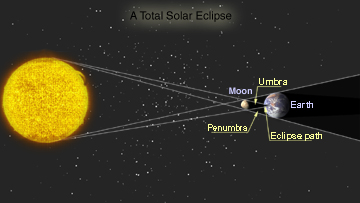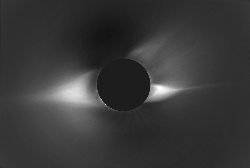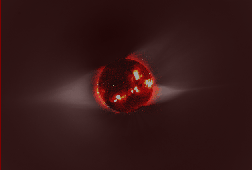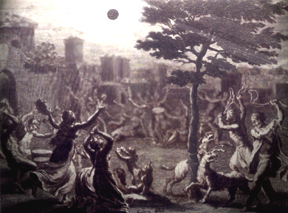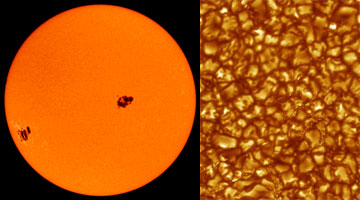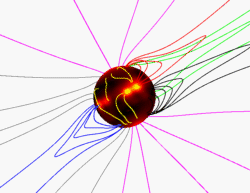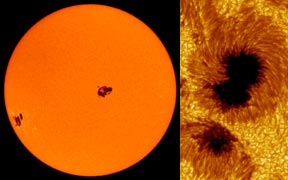Click on image for full size
Courtesy of the Corel Corporation
The Right Way to View a Solar Eclipse
A solar eclipse is a spectacular event that many do not get a chance to see. A total solar eclipse, one in which the entire Sun is blocked by the Moon, is even rarer. Those that get an opportunity to see such an occurrence should take full advantage. However, you must make sure that the eclipse is not the last thing you see. If viewed improperly, the Sun can permanently damage your eyes. Fortunately, there are many safe and reliable ways to view a solar eclipse.
The old fashion way of viewing an eclipse is using a projection. This can be done a number of ways. A telescope can be lined up to face the Sun. Hold a piece of dark paper with a hole in it near the eyepiece and a sheet of white paper behind that. The eclipse will be projected onto the white paper.
This can also be done without using a telescope. A cardboard box can be made into a viewing box by putting a hole in one side, and allowing the Sun to project onto a white piece of paper inside it. The box will block out any unwanted light.
A more modern way of viewing the eclipse involves wearing a special type of glasses. Do NOT wear regular sunglasses! Although they protect your eyes from glaring UV rays, they do not hold up against direct rays from the Sun. A special type of sunglasses can be bought wherever the eclipse will be visible.
Remember, it is very important not to look at the Sun with your naked eye. Things like CDs, diskettes and regular sunglasses are not good for protection. Children are in extreme danger, so extra precaution should be taken when bringing them along. Just to be safe, create a projection device for the kids to use. It's better to be safe than sorry.







